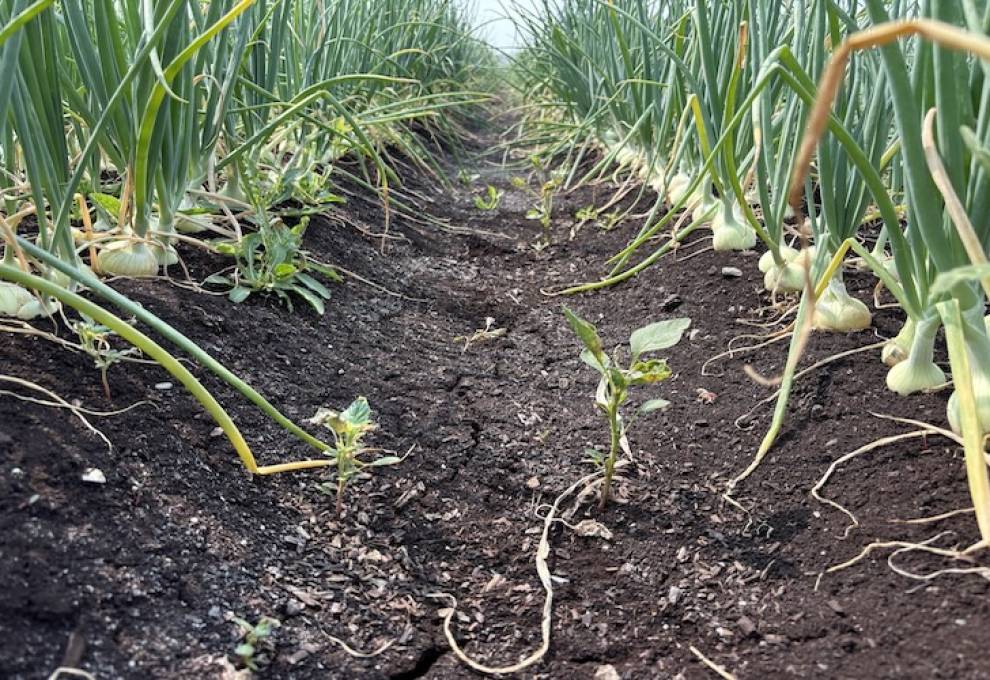
by: MASSIMO BERGAMINI & CHRISTINA TURI
Policy decisions made in Ottawa rarely stay on paper —they ripple through farms, greenhouses, and packing sheds across the country. And it’s not just agriculture policy that impacts growers. Most often it’s policies with roots that are far removed from agriculture that have the greatest impact.
That’s why the Fruit and Vegetable Growers of Canada (FVGC) has been advocating for a food lens to be applied to all federal policymaking, an approach that would ensure agriculture and food security are fully considered in all policy development.
The use of a food lens in federal policymaking is predicated on the assumption that food security and growing a more resilient agriculture sector to support it are seen as a national priority by the Government of Canada.
For the first time in years, there were recent commitments in the May Speech from the Throne that give us reason to believe that supporting food security and a stronger agriculture sector may have moved up the Government’s agenda. Most telling, however, may be the Liberal Government’s 2025 platform specifically calling for change at the Pest Management Regulatory Agency (PMRA) by promising to consider food security within all regulatory decisions.
Why this matters
Health Canada’s PMRA is the federal body responsible for science-based regulation of crop protection tools in Canada and is mandated under the Pest Control Products Act to prevent unacceptable risks that could be posed to both human health and the environment.
While the PMRA’s mandate is the foundation for all downstream activities of the agency, formal mechanisms to consider negative impacts to our sector’s viability and competitiveness are not integrated into the PMRA’s decision-making process. As a result, growers have lost a significant number of registered uses over the last five years without identification of suitable alternatives.

Source: PMRA Product Information Database (Accessed June 2025)
When the PMRA decides to remove products from the market, the agency is not required to consider food production impacts or find suitable alternatives. There is also no requirement to engage with grower organizations prior to the publication of a proposed decision. As a result, today, growers are left to fend for themselves when products are cancelled or withdrawn from the marketplace.
To complicate matters further, efforts to mitigate impacts from the overall loss of crop protection tools are falling short as the sector has experienced significant delays in bringing new products to market through the PMC’s Minor Use Pesticide Program (MUPP) and Cat. A registration process. For example, applications for new products (Cat. A) are taking three to four years to complete instead of the standard two years. In some instances (e.g. products used by greenhouse growers), the registration process is taking 2.5 – 3.5 times longer than it would in the U.S., despite the data having been generated through joint projects with the USA’s IR-4 project.
Moving forward
While the legislation that mandates the PMRA calls for a balanced approach to pesticide regulation, the lack of formal and transparent assessments of the impact of the agency’s decisions on agriculture mean these are often given short shrift.
The integration of a food lens into the PMRA’s decision-making practices would require the regulator to conduct a cost-benefit analysis of policy initiatives by examining their impact on agricultural production and would ensure that any trade-offs were transparent.
For example, during re-evaluations the transparent application of a food lens would require the PMRA to consult earlier with grower organizations to understand the downstream implications of a product’s removal and suitability of alternatives. It would also provide growers with the opportunity to feed into the decision-making process by providing additional information to refine risk assessments or make recommendations on which uses should be kept. Any trade-offs and steps taken to mitigate impacts would then be communicated in the proposed decision.
But beyond its regulatory process, there are other examples of how a food lens could clarify the nature of decision-making. For example, with sweeping cuts to public service spending just announced, a food lens would ensure their downstream impact on agriculture and food security are considered in decision-making. Using a food lens to assess where cuts should be made within the Heath Canada portfolio, the department would have to determine – and, importantly, report on - the impact these cuts would have on the timely delivery of new crop protection tools.
Having been successful in the last election in having the importance of a food lens recognized by the governing party, and later in the Speech from the Throne, FVGC will continue to make this a centerpiece of its advocacy when Parliament resumes sitting on September 15.

